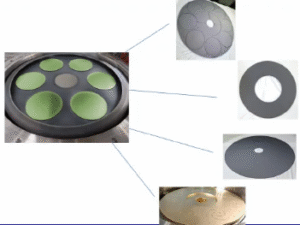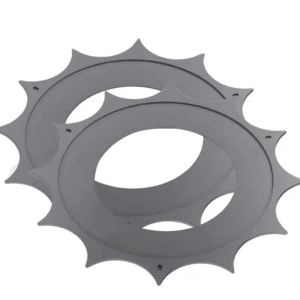
ヒートエレメントは、電気エネルギーを熱に変換し、さまざまな用途に欠かせない役割を果たしています。 しかし、特定の条件下でリスクをポーズすることができます。 故障配線、破損した部品、または不十分な絶縁材はユーザーに電気衝撃に露出するかもしれません。 例えば、腐食される 加熱要素 電動式給湯器では、危険な状況を創り出す、電流を流すことができます。 現代設計、のような silicon carbide heating element、高度材料および熱制御を組み込むことによって安全を優先します。 これらの機能は温度を調節し、過熱を防ぐのを助けます、より安全な操作を保障します。 これらのリスクや安全対策を理解することは、事故を防止するために不可欠です.
要点
- 加熱要素は、障害のある配線、破損したコンポーネント、または不十分な断熱のために電気ショックリスクをポーズすることができます。定期的な検査は不可欠です.
- 近代的な加熱要素を組み込む 安全機能 過熱保護およびシステムを基づかせているように、危険を最小にし、ユーザーの安全を高めます.
- 安全基準の順守と電気障害のリスクを削減するために、常にインストールとメンテナンスのためにライセンスされた電気技師を雇います.
- 特にそのような条件のために設計されていない限り湿った環境の加熱要素を使用して避けて下さい;湿気は絶縁材を妥協し、衝撃に導くことができます.
- 残留電流装置(RCD)や遮断器などの安全装置を活用し、電気ショックや電気火災に対するさらなる保護を提供します.
- Choose 評判の良いブランド 安全規格に準拠し、信頼性を確保し、加熱要素に関連したリスクを最小限に抑える認定製品を提供します.
- 加熱要素が安全でないと疑われる場合は、すぐに解凍し、損傷を検査し、修理や交換のために専門家に相談してください.
加熱要素はどのように機能しますか?
加熱要素は、電気エネルギーを熱に変換し、呼ばれるプロセスを介して動作する Joule heating. . 電流が抵抗材料を通過すると、材料は電子の流れに抵抗し、熱として散らすエネルギーを引き起こします。 この原則は、さまざまなデバイスにおける加熱要素の機能の土台を形成します.
加熱要素の背後にある科学
加熱要素の設計は、特定の特性を持つ材料を選択に依存しています。 高抵抗性は、酸化抵抗が高温での劣化を防ぎながら、効率的な熱生成を保証します。 ニクロム(ニッケルおよびクロムの合金)のような材料は頻繁になしで高温に抗する耐久性および能力のために一般に使用されます.
抵抗の温度係数も重要な役割を果たします。 このプロパティは、材料が熱するにつれて、どのくらいの抵抗が変化するかを決定します。 安定した係数は、オーブンや工業炉などの用途で精密な温度制御を維持するために不可欠である安定した性能を保証します.
機械的強度と高い融点により、加熱エレメントの信頼性が向上します。 これらの特性は、要素が繰り返し加熱および冷却サイクルを失敗することなく耐えることを可能にします。 例えば、, 炭化ケイ素の熱する要素 高温環境では、優れた熱伝導性を強固な機械的特性と組み合わせることにより、高温環境で用いられることが多い.
日常生活における加熱要素の一般的な適用
暖房の要素は多くの家庭用電化製品および産業システムに統合されます。 家庭では、次のようなデバイスで見つかります
- トースターとオーブン: : : 熱を均一に発生させ、分配することによって食糧を調理するか、焼くのにこれらの使用熱要素.
- 電気給湯器: 加熱要素は、シャワー、食器洗浄、その他の国内ニーズに温水を温めます.
- スペース ヒーター: : : これらのデバイスは、加熱要素に依存して、より冷たい気候で暖かさを生み出します.
工業用設定では、金属鍛造、ガラス製造、化学生産などの加工が可能です。 科学器械はまた実験かテストのための精密な温度を維持するために熱する要素を利用します.
例えば、高度な加熱要素を装備した実験室炉は、2,000°Fを超える温度に達することができ、研究者は極端な条件下で材料を研究することができます.
加熱要素の汎用性は、シートウォーマーや霜を取り除くシステムで使用される自動車用途に拡張されます。 制御された熱を提供する能力は、さまざまな分野に不可欠です.
加熱要素は安全に使用できますか?
加熱要素は、設計され、正しく使用したときに一般的に安全です。 メーカーは、リスクを最小限に抑え、信頼性の高い動作を保証するために、さまざまな安全機能を組み込んでいます。 しかし、これらの機能を理解し、安全基準の遵守の重要性は、ユーザーが情報に基づいた意思決定を行うために不可欠です.
加熱要素の組み込み安全機能
現代の加熱要素には、潜在的な危険からユーザーを保護するための高度な安全メカニズムが含まれています。 これらの機能は、インストールされているデバイスの信頼性と機能性を高めます.
過熱保護: 熱締切りかサーモスタットと多くの熱要素が装備されています。 これらのコンポーネントは、特定の温度に達すると自動的に要素をシャットオフし、過熱を防ぎ、火災リスクを軽減します.
絶縁材料: 高品質の断熱材は、ほとんどの加熱要素を囲み、生線との偶発的な接触を防ぐことができます。 高温環境でも、電気ショックのリスクを低減します.
接地システム: 接地ワイヤーかシステムは頻繁に暖房の要素が付いている器具に統合されます。 これらのシステムは、ユーザーから離れた直流電流をストレイし、障害が発生した場合の安全を保証します.
導入事例: : : セラミックや石英などの加熱要素は、保護材に充填されています。 この設計は要素への直接露出を最小限にし、火傷や衝撃の可能性を減らします.
たとえば、セラミックの加熱要素は、電気的に安全なまま熱を保持する能力のために、スペースヒーターで広く使用されています.
これらの組み込み機能は、加熱要素の効率性を維持しながら、ユーザーの安全を優先するメーカーのコミットメントを示しています.
安全基準の遵守の重要性
確立された安全基準の遵守は、加熱要素の安全な使用を確保するために重要な役割を果たしています。 規制機関は、潜在的なリスクに対処するために、これらの基準を設定し、製造およびテストのガイドラインを確立します.
認証マーク: UL(アンダーライター研究所)やCE(Conformité Européenne)などの認証を取得した製品は、厳格な安全要件に準拠しています。 これらのマークは、加熱要素が徹底したテストを受けているユーザーを保証します.
物質的な質: 安全規格は、加熱要素の耐久性と無毒材料の使用を義務付けています。 高品質の材料は、故障のリスクを減らし、長期的な信頼性を確保します.
電気安全試験:メーカーは、電気絶縁、接地、および加熱要素の抵抗を評価するためにテストを実施しなければなりません。 様々な条件下で安全に動作できるテストです.
グローバル基準: 国際電気技術委員会(IEC)などの国際機関は、加熱要素の安全に関するガイドラインを提供します。 これらの基準の遵守により、製品がグローバルな安全要求を満たしていることを確認します.
たとえば、認定された加熱要素を備えた電気給湯器は、厳しい安全基準を満たすことで、ユーザーに安心してお任せいただけます.
認定安全基準に準拠した製品を選択することで、加熱要素に関連したリスクを大幅に削減できます。 この練習は個人を守るだけでなく、評判の良いメーカーの信頼を促進します.
どのような条件下では、加熱要素があなたにショックを与えることができますか?
発熱体からの電気ショックは、特定の状況下で発生する可能性があります。 これらの状況は、配線、コンポーネントの整合性、または重要な安全メカニズムの欠如に関連する問題のために発生することが多いです。 これらの条件を理解することで、ユーザーは潜在的な危険を特定し、予防措置を取ることができます.
欠陥の配線か不適切な取付け
故障配線や誤ったインストールは、加熱要素を使用して重要なリスクを保っています。 不適切な接続されたワイヤーは電気漏出を作成できま、ユーザーに生きている流れに露出します。 たとえば、過負荷回路は過熱にワイヤを引き起こし、電気火災や衝撃の可能性を高める可能性があります.
場合によっては、配線が悪い携帯用電気給湯装置は使用の間に重く電気衝撃を引き起こしました。 そのような事件は、プロのインストールと定期的な検査の重要性を強調しています。 ワイヤーが安全に接続され、損傷から解放されていることを保証することは、これらのリスクを大幅に削減することができます.
チップ: : : 常にライセンスされた電気技師にインストールを雇い、その電気器具はローカル電気コードに準拠していることを検証します.
損傷または摩耗した部品
時間の経過とともに、加熱要素は摩耗と涙を経験し、妥協された安全につながる可能性があります。 絶縁材、腐食された関係、または壊れた部品は電気流れにユーザーに露出できます。 たとえば、電気給湯器に腐食した加熱要素が漏れ、危険な状況を作ることがあります.
実験室の熱い版のような古い装置は、また危険をポーズできます。 摩耗したスイッチまたはサーモスタットからの電気火花の危険は事故につながるかもしれません。 損傷した部品の定期的なメンテナンスとタイムリーな交換は、安全を確保するために重要です.
例: : : 焼却炉の加熱コイルに誤って触れた後、電気ショックを受けた労働者が報告した。 この事件は、露出または劣化したコンポーネントを使用して機器を使用する危険性を強調します.
接地や安全機器の欠如
接地システムや安全装置がないと、電気ショックの危険性が高まります。 接地ワイヤは、ユーザーから遠ざる線の電流を指示する上で重要な役割を果たします。 適切な接地がなければ、加熱要素の欠陥は危険な状況で起因することができます.
回路遮断器や残留電流装置(RCD)などの安全装置は、さらなる保護を提供します。 これらの装置は電気不均衡を検出し、衝撃を防ぐ力を切りました。 しかし、不適切な大きさや不在な遮断器は、ユーザーの保護に失敗することができます。 例えば、空間ヒータが関与する 2017年と2019年の間の1,700の火 多くの場合、十分な安全機能が欠けています。, 怪我や死亡につながる.
推奨事項: : : 近代的な安全メカニズムを装備し、あなたの家の電気システムがきちんと大きさの遮断器を含んでいることを保障する電気器具を使用して下さい.
これらの条件に対処することにより、故障配線、破損した部品、および接地の欠如 - ユーザーは、加熱要素に関連するリスクを最小限に抑えることができます。 定期的なメンテナンス、安全基準を遵守し、認定製品の使用により、保護を強化します.
加熱要素が衝撃を引き起こす可能性がある一般的なシナリオ
湿った環境での加熱要素の使用
水と電気は危険な組み合わせを作成します。 湿式または湿式環境での加熱要素を使用することで、電気ショックの危険性が大幅に増加します。 湿気は電気部品の絶縁材を妥協し、流れが脱出し、潜在的にユーザーを傷つけることを可能にします。 たとえば、損傷した要素を持つ電気給湯器は、周囲の水に電流を漏れる場合があります。 これは、接触が最小限であっても、電気切断につながる可能性がある危険な状況を作成します.
バスルーム、キッチン、屋外スペースは、加熱要素を湿気にさらします。 スペースヒーターや電気ケトルなどの装置は、シンクや湿気の多い条件の近くで使用すると、電気障害により敏感になります。 そのような環境の故障した加熱要素は、深刻な結果をもたらすことができます. かつての自家所有者は、貧しい換気されたバスルームにポータブル給湯器を使用して衝撃を受けていると報告しました。 装置は適切な接地を欠いていましたり、凝縮は表面で貯えられました.
これらのリスクを軽減するには、デバイスがそのような条件のために特別に設計された場合を除き、ユーザーは濡れた領域で加熱要素を動作させることを避ける必要があります。 防水ケーシングまたはIP定格エンクロージャを備えたアプライアンスは、追加の安全を提供します。 湿気を発する区域の地上の欠陥の遮断器(GFCIs)を取付けることはまた電気不均衡が起こるとき力を断ち切ることによって事故を防ぐのを助けます.
チップ: : : 常に電気器具を取り扱う前に手を乾燥させ、コードとプラグが水にさらされるのを防ぎます.
DIYは要素を加熱するために修理するか、または修正します
適切な専門知識なしで加熱要素を修復または変更しようとすると、重要なリスクが導入されます。 多くの個人は、これらのコンポーネントの複雑性を低下させ、安全を侵害する不適切な修正につながる。 たとえば、破損した加熱コイルを互換性のない部品に交換すると、過熱や電気漏れが発生することがあります。 そのようなエラーは、デバイスの効率を低下させるだけでなく、電気ショックの可能性を高めるだけでなく、.
DIY の熱狂者は頻繁に性能を高めるか、または費用を救うために安全メカニズムを迂回することを試みます。 熱締切りを取除くか、絶縁材を変えることはユーザーに生きている流れに露出します. 1つの場合、ユーザーは調理時間をスピードアップするために、トースターの加熱要素を変更しました。 変化は要素を過熱させ、装置が触れられたとき絶縁材を、重く電気衝撃に導きます溶かします.
専門の修理は熱する要素が安全にそして効率的に機能することを保障します。 認定技術者はメーカーのガイドラインに従い、互換性のある部品を使用して、機器を元の条件に復元します。 ユーザーは、事故を防止するために、これらのメカニズムが重要であるので、安全機能で改ざんを避けるべきです.
推奨事項: : : 常に修理のためのライセンス技術者に相談し、損傷や摩耗の兆候を示す器具の使用を避けます.
加熱要素から電気ショックを防ぐ方法
適切なインストールとメンテナンスを実施
適切なインストールと定期的なメンテナンスは、加熱要素から電気ショックを防ぐ上で重要な役割を果たします。 認可された電気技師は設置プロセスをローカル電気コードに従うように扱うべきです。 誤った配線や不適切な接続は、電気漏れにつながることができます, 事故の危険性を高める. 例えば、弱く設置された電気給湯器は、接地が不足し、潜在的な危険性をユーザーに露出することがあります.
ルーチンの維持は等しく重要です。 時間の経過とともに、加熱要素は、損傷した断熱材や腐食成分などの摩耗や破損を経験することがあります。 これらの問題は安全を妥協し、電気障害につながることができます。 定期的な検査は、エスカレートする前に、これらの問題を特定し、対処するのに役立ちます。 ユーザーは摩耗した部品を速やかに交換し、損傷の目に見える兆候を示すアプライアンスを使用して避けるべきです.
チップ: 暖房の要素が付いている器具のための年次点検をスケジュールし、製造業者の維持の指針に常に従います.
RCDや遮断器などの安全装置の使用
残留電流装置(RCD)や遮断器などの安全装置は、電気ショックやその他の電気的危険に対する重要な保護を提供します。 各デバイスは、各デバイスが特定の目的のために機能し、一緒に使用したときに全体的な安全を強化します.
RCDシリーズ: : : これらの装置は発熱体または配線の欠陥によって引き起こされる漏出流れを検出します。 それらは電気衝撃を防ぐためにミリ秒内の力を切り消すためにすぐに作用します。 RCDは、電気切断のリスクが高い湿った環境で特に効果的です。 たとえば、RCDは、電気給湯器が周囲の水に電流を漏れた場合、衝撃からユーザーを保護することができます.
遮断器: : : これらの装置は積み過ぎおよび短絡から、熱する要素および他の部品を損なうことができる保護します。 電動ショックを直接防いでいませんが、火災や機器の故障のリスクを低減します。 サーキットブレーカはRCDよりも手頃な価格であり、頻繁なリセットを必要としています.
Comparison: 回路遮断器は、電気的損傷から電気機器を保護することに焦点を合わせながら、小さな漏れ電流を検知することにより、電気切断を防ぐことができます。 両方のデバイスを使用して、包括的な安全を保証します.
あなたの家の電気システムにこれらの安全装置を取付けることは危険をかなり減らします。 RCDおよび適切なサイズの遮断器が装備されている回路に熱する要素が付いている電気器具が接続されていることを保障します.
加熱要素の安全な使用のためのベストプラクティス
最高のプラクティスを採用することで、加熱要素の安全な動作を確保し、電気ショックのリスクを最小限に抑えます。 ユーザーは、安全を高めるために、これらのガイドラインに従う必要があります
- ぬれた環境を避けて下さい: 適用がそのような条件のためにとりわけ設計されていない限り熱する要素を水か湿気から保って下さい。 たとえば、浴室やキッチンに防水装置を使用して、事故を防止します.
- コードおよびプラグを点検して下さい: フレアされたワイヤー、緩みのある接続、または任意のアプライアンスを使用する前に破損したプラグを確認してください。 故障した部品を直ちに交換し、安全を維持します.
- 多用性がある部品を使用して下さい: : : ヒートエレメントの修理や交換は、メーカーが推奨する部品を必ず使用してください。 互換性のないコンポーネントは、アプライアンスの安全機能を侵害することができます.
- 操作指示に従ってください: 適切な使用のためのメーカーのガイドラインを読み、遵守します。 過負荷回路や安全メカニズムを迂回するなど、機器の誤用、衝撃のリスクを増加させます.
- GFCIsのインストール: 地上の欠陥の遮断のインタールプター(GFCIs)は湿気に傾向がある区域の付加的な保護を提供します。 これらの装置は、電気的不均衡を検出し、事故を防ぐときに電力を遮断します.
例: : : ポータブルスペースヒーター用のGFCIアウトレットを使用して、湿った地下室に重度の電気ショックを回避した住宅所有者。 湿気が軽微な欠陥を引き起こしたとき、そのような安全対策の重要性を強調した装置.
適切なインストール、定期的なメンテナンス、およびベストプラクティスの遵守を組み合わせることで、ユーザーは、加熱要素に関連するリスクを大幅に削減することができます。 これらの積極的なステップは、住宅および産業設定の両方で安全で信頼性の高い操作を保証します.
加熱要素が安全でないと疑った場合はどうするか
潜在的な問題の兆候を特定する
危険な加熱要素の早期警告標識を認識することは、事故の防止に不可欠です。 ユーザーは、異常を定期的に点検し、ウイルス性を維持する必要があります。 潜在的な問題の一般的な指標は次のとおりです
- 異常騒音: 操作中のブズ、クラック、またはポップング音は、電気的障害や破損したコンポーネントを信号することができます.
- 可視性損傷: 線線、火傷跡、または加熱要素の露出した部分は、妥協された安全を提案します.
- 過熱すること: 通常の動作レベルを超える過度の熱は、誤動作サーモスタットまたは絶縁障害を示すことができます.
- 明滅力: 断続的に力を失うか、または矛盾する性能を表示する電気器具は不完全な配線か緩い関係があるかもしれません.
- 電動ショック: : : 問題または電気漏出を基づかせることへの器具ポイントに触れるときでさえ穏やかなtinglingの感覚.
たとえば、電気ケトルを使っている間、ユーザーはわずかな衝撃を感じたと報告した。 点検すると、彼らは、ライブワイヤを露出損傷したコードを発見しました。 そのような徴候を速やかに対処することの重要性を強調しています.
これらの症状を早期に特定することにより、ユーザーはリスクを軽減し、その装置の安全な操作を確実にするために積極的な措置を講じることができます.
安全を保障するために取るステップ
加熱要素が安全でない兆候を示すとき、害を防ぐための即時の行動が必要です。 これらの手順に従って、問題に効果的に対処します
- アプリケーションを切断する: : : 動力源からの装置を抜いて、電気衝撃の危険を除去して下さい。 硬質電気器具は、ユニットに電力を供給する遮断器をオフにします.
- アプライアンスを調べる: 問題のソースを識別するために視覚的な検査を実施します。 壊れたワイヤー、焼跡の部品、または緩い関係のために見て下さい.
- さらなる使用を避ける: : : 問題が解決するまで、アプリの動作を試みないでください。 障害のある発熱体の使用は、事故のリスクを増加させます.
- 専門家に相談: ライセンスされた技術者または電気技師に連絡して、器具の評価と修理を行います。 専門家は問題を正確に診断し、安全な修理を保障する専門知識を持っています.
- 必要に応じて置換する: : : 加熱要素や電気器具が修理を超える場合は、新しい認定製品に交換してください。 安全規格および機能の組み込みの保護メカニズムに従うモデルを選んで下さい.
- 安全上の懸念を報告: : : 特に家電が保証下にある場合は、メーカーや小売業者に通知します。 不具合の報告は、製品安全の向上と、他の利用者の類似事故の防止に役立ちます.
例: : : 自家所有者は、燃焼匂いを放出し、すぐにそれを解凍するスペースヒーターに気付いた。 その後、技術者は、加熱要素が故障したサーモスタットのために過熱していたことを確認しました。 潜在的な火災の危険を防止する予防措置.
これらの手順を取ると、ユーザーはリスクを最小限に抑えながら、安全上の懸念を効果的に対処します。 定期的なメンテナンスと安全ガイドラインの遵守により、加熱エレメントの信頼性が向上します.
ヒートエレメントの安全性を確保するためのメーカーの役割
ニンポー VET エネルギーテクノロジー株式会社と安全への取り組み
メーカーは、加熱要素の安全と信頼性を確保するために、ピボタル役割を果たしています。 寧波VETエネルギー技術有限公司、 当社は、品質の高い素材と高度なソリューションを生産し、その献身を通じて、この責任を実行します。 同社は、グラファイト、炭化ケイ素、セラミックスなどの優れたコンポーネントの製造を専門としています。これは、加熱要素の構造的完全性と性能に不可欠です。 これらの材料は耐久性を高めるだけでなく、熱効率を改善し、故障の可能性を減らします.
ニンポー VET エネルギー技術 製造工程全体の厳格な品質管理対策に従った安全を優先します。 各製品は、業界標準を満たすために厳しいテストを受け、顧客は信頼性と安全なソリューションを受け取ることを保証します。 例えば、その炭化ケイ素の発熱体は、電気絶縁を維持しながら極端な温度に耐えるように設計されており、電気ショックや過熱のリスクを最小限に抑えます.
また、材料選定や応用に関する専門家の指導により、太陽光発電、半導体、冶金などの業界にも対応しています。 この専門知識は、メーカーが製品に安全加熱要素を統合し、エンドユーザー間の信頼と信頼性を促進するのに役立ちます。 革新および安全に焦点を合わせることによって、ニンポーVETエネルギー技術Co.は発熱体工業の卓越性のためのベンチマークを置きます.
例: : : Ningbo VET Energy Technology Co.と提携し、高度な炭化ケイ素材料を高温加熱システムに組み込む。 このコラボレーションにより、安全性と効率性が向上し、同社の約束を実証し、最先端のソリューションを提供します.
評判の良いブランドを選ぶ理由
加熱要素の評判の良いブランドを選択すると、安全性と性能が著しく影響します。 国際的な安全規格に従うプロダクトを作成するために製造業者が研究開発に投資しました。 サーマルカットオフ、接地システム、高品質絶縁などの高度な機能を組み込むことで、ユーザーの保護を優先します.
評判の良いブランドはまた、認定および規制要件の遵守を含む、自社製品についての透明な情報を提供します。 たとえば、ULまたはCE認証の加熱要素は、安全性と信頼性のユーザーを保証します。 そのような製品を選ぶと、欠陥成分や標準材料によって引き起こされる事故の危険性が低下します.
対照的に、統合ソースからの低コストの代替手段は、多くの場合、重要な安全機能が欠けています。 これらの製品は、すぐに劣化する劣った材料を使用して、電気障害や過熱の可能性を高めることができます。 信頼できるブランドに投資することで、長期にわたる信頼性を確保し、メンテナンスコストを最小限に抑え、より安全で経済的な選択を実現します.
チップ: : : 常にメーカーの資格情報を確認し、加熱要素を購入するときに認証マークを探します。 この練習はプロダクトが確立された安全基準を満たし、一貫した性能を渡すことを保障します.
寧波VETエネルギー技術有限公司のような評判の良いメーカーを選択することにより、ユーザーは安全と効率を優先する加熱要素に自信を持って頼ることができます。 これらの企業は、製品の品質を高めるだけでなく、より安全で持続可能な未来に貢献します.
加熱要素の主な安全のヒント
加熱要素は、多くのアプライアンスで必須コンポーネントですが、安全な使用は細部に細心の注意を払い、ベストプラクティスを遵守する必要があります。 このセクションでは、主要な安全対策の簡潔な要約を提供し、加熱要素の安全性を高める技術の進歩を強調します.
加熱要素の安全な使用のためのチェックリスト
安全への構造化されたアプローチは、リスクを最小限に抑えながら、加熱要素の信頼性の高い動作を保証します。 ユーザーは、このチェックリストに従って、安全を維持する必要があります
- 電化製品を規則的に点検して下さい: フレアワイヤ、バーントマーク、露出した部品など、可視損傷のチェック すぐに問題に対処します.
- 適切なインストールを確保: : : ローカル電気コードおよび標準に従うことを保証するために取付けのための高く評価される電気技師.
- 安全装置の使用: 残存電流装置(RCD)と回路遮断器で故障を検知し、事故を防止します.
- ぬれた環境を避けて下さい: 適用がそのような条件のためにとりわけ設計されていない限り湿気から熱する要素を保って下さい.
- メーカーのガイドラインに従う: 取扱説明書を操作し、安全メカニズムの改ざんや互換性のない部品の使用を避けます.
- 定期メンテナンススケジュール: 年間検査を実施し、摩耗部品を交換し、最適な性能と安全性を確保します.
- 地上の欠陥回路のインタールプター(GFCIs)を取付けて下さい: : : 浴室やキッチンなどの湿気に富んだ部分にGFCIsを使用し、電気ショックを防止します.
例: : : 自家所有者は、動作中に異常な騒音を指摘した後、オーブンで損傷した加熱要素を交換することにより、潜在的な火災の危険を回避しました。 定期的な検査は、そのような事故を防ぐことができます.
このチェックリストに従うことによって、ユーザーは、加熱要素に関連するリスクを大幅に削減し、安全な操作を確保することができます.
安全性を高める技術の進歩
技術革新は、加熱要素の安全機能に革命をもたらし、より信頼性とユーザーフレンドリーにします。 これらの課題は、一般的なリスクに対応し、ユーザーの保護を強化します.
スマートホーム統合: 現代の加熱要素は、ユーザーがリモートで機器を監視および制御できるようにスマートテクノロジーを組み込んでいます。 スマートデバイスは、電気使用に関するリアルタイムデータを提供し、ユーザーは問題を早期に検出し、事故を防止するのに役立ちます。 たとえば、過熱を検出すると、スマートサーモスタットはスペースヒーターをシャットできます.
冗長安全システム: 製造業者は、機密環境のリスクを最小限に抑えるために、冗長制御とセンサーを導入しました。 これらのシステムは、過熱または電気的障害を検出し、事故を防止するために、自動停止します。 冗長設計は、安全メカニズムが失敗しても、他の人がユーザーを保護するために活動的に残っていることを保証します.
先端材料: : : シリコンカーバイドやセラミックスなどの高品質の材料を使用し、加熱要素の耐久性と安全性を高めます。 これらの材料は酸化に抵抗し、電気絶縁材を維持し、機能不全の可能性を減らします。 たとえば、電気伝導性を最小限にしながら、セラミックの加熱要素は熱を効率的に保持し、家庭での使用を安全にします.
絶縁技術の向上: 現代絶縁材は電気漏出および過熱に対してよりよい保護を提供します。 水晶発熱体に見られるような設計を想定し、さらにはライブ部品との偶然の接触の危険性を減らします.
グローバル基準の遵守: 製造業者は厳しい国際安全規格に付着し、加熱要素が厳しい試験要件を満たしていることを確認します。 ULやCEなどの認証は、製品が安全性と信頼性の徹底的な評価を受けていることを示しています.
Comparison: 初期加熱要素は、高度な安全機能が欠如し、それらが過熱と電気的障害に傾向がある。 スマートな技術および良質材料が装備されている現代設計は、優秀な保護および効率を提供します.
これらの進歩は、加熱要素の安全と信頼性を高めるための業界のコミットメントを示しています。 これらの技術を活用することで、住宅や工業的なセッティングにおいて、より安全で効率的な家電製品を楽しむことができます.
加熱要素は、ユーザーが適切な安全慣行に従うときに信頼性と効率的なパフォーマンスを提供します。 高度の特徴が装備されている現代設計、大幅に電気衝撃の危険を減らします。 定期的なメンテナンス、安全ガイドラインの遵守、および認定製品の使用は、最適な機能を保証します。 寧波VETエネルギー技術有限公司などの評判の良いメーカーを選択し、安全性と信頼性をさらに高めます。 これらの対策を優先することにより、潜在的な危険を最小限に抑えながら、個人は住宅や産業設定の加熱要素を安心して活用することができます.
よくあるご質問
加熱要素とどのように機能しますか?
加熱要素は、電気エネルギーを熱に変換し、呼ばれるプロセスを介して熱します Joule heating. . 抵抗材料を通した電流が流れるとき、材料は電子の流れに抵抗し、熱を発生させます。 加熱要素は、この変換を有効にする加熱抵抗器と付属品で構成されています。 性能は、電力(ワット数)、最大動作温度、シース材料、電源仕様などの要因によって異なります。 適切な流体の流れと温度制御も、効率を最適化する役割を果たします.
例: : : 電動式給湯器では、加熱エレメントは、抵抗材料を通過する電流から発生する熱を移すことで水を温めます.
加熱要素の異なる種類は何ですか?
加熱要素は、特定のアプリケーション用に設計されたさまざまなタイプで提供されます。 一般的な例:
- Nichrome ワイヤー要素: トースターやドライヤーで発見され、耐久性と高温抵抗のニッケルクロム合金を使用します.
- 陶磁器の暖房の要素: : : スペース ヒーターで使用される、これらは熱を効率的に保ち、安全な操作を提供します.
- 炭化ケイ素の要素: 産業炉で共通、これらは極端な温度に耐えるし、優秀な熱伝導性を提供します.
- 水晶発熱体: : : 赤外線ヒーターで使用される多くの場合、これらは急速な暖房を提供し、安全のために要求されます.
各タイプは、世帯、産業および科学的な適用を渡る多目的にそれらを作る独特な目的に役立ちます.
加熱要素は安全に使用できますか?
加熱要素 設計され、正しく使用されるとき一般に安全です。 メーカーは、過熱保護、接地システム、およびリスクを最小限に抑えるために高品質の断熱などの安全機能を組み込んでいます。 ULやCE認証などの安全規格に準拠し、厳しい試験要件を満たす製品を保証します。 ユーザーは、メーカーのガイドラインに従って、定期的に機器を検査し、損傷した機器を使用して安全を維持する必要があります.
チップ: : : 信頼できる性能および作り付けの安全メカニズムを保障するために評判が良いブランドからの熱要素を常に選びます.
加熱要素がショックを受けることはできますか?
加熱要素は、欠陥配線、破損したコンポーネント、または適切な接地の欠如など、特定の条件下で電気ショックを引き起こすことができます。 たとえば、電気給湯器に腐食した加熱要素が漏れ、危険な状況を生むことがあります。 使用方法 加熱要素 濡れた環境や、専門知識のないDIY修理を試みることにより、衝撃の危険性が高まります.
推奨事項: : : 残りの現在の装置(RCD)のような安全装置が装備されている電気器具を使用し、そのような条件のために設計されなければ湿気がある区域の作動の発熱体を避けて下さい.
加熱要素から電気ショックを防ぐ方法は?
電動ショックの予防には、適切なインストール、定期的なメンテナンス、および安全慣行の遵守が含まれます。 主な対策は次のとおりです
- インストールのためのライセンス電気技師を雇う.
- 線線や火傷などの目に見える損傷のための器具の点検.
- RCDやサーキットブレーカなどの安全装置を使用.
- 防水性がなければぬれた環境を避けて下さい.
- 操業および維持のための次の製造業者の指針.
例: : : 自家所有者は、動作中に異常な騒音を指摘した後、オーブンで損傷した加熱要素を交換することにより、電気ショックを防止しました.
加熱要素が安全でないと思われる場合はどうすればよいですか?
加熱要素が安全でないと、ユーザーはすぐにアクションを取る必要があります
- 電源からアプリケーションを切断します.
- 露出されたワイヤーか焼跡の部品のような目に見える損傷のための点検.
- 問題が解決されるまで、さらに使用しないでください.
- 修理のための認可された技術者に相談して下さい.
- 必要に応じて、認定製品を安全機能で選ぶ、アプライアンスを交換します.
チップ: 不良品をメーカーに報告することで、製品の安全性を向上させ、他のユーザーに対して同様の事故を防ぐことができます.
加熱要素のパフォーマンスに影響を与える要因は何ですか?
いくつかの要因は、加熱要素の性能と耐用年数に影響を及ぼします
- 力かワット数: 熱出力および効率を決定して下さい.
- 最高の実用温度: : : 高熱アプリケーションを処理する要素の能力に影響します.
- 外装材料: 要素を保護し、耐久性を高めます.
- 電源仕様: 電圧および頻度条件との両立性を保障して下さい.
- 流体の流れと温度制御: : : 給湯器や工業炉などの用途での熱伝達を最適化します.
例: : : 精密な温度制御と高品質の加熱要素を備えた実験室炉は、実験中に一貫した性能を保証します.
なぜ加熱要素のために重要な接地?
接地は、ユーザーから遠ざる、電気ショックの危険性を低減するストレイ電流を指示します。 適切な接地システムを備えた器具は、障害や電気漏れの場合には安全を保証します。 接地なし、加熱要素の欠陥は、特に湿った環境で危険な状況を作成することができます.
推奨事項: 加熱要素を持つ器具には、接地システムが含まれていることを確認し、RCDを搭載した回路に接続して、追加の保護を行います.
製造業者が加熱要素の安全を確保する方法は?
メーカーは厳格な品質管理措置と業界標準を遵守し、安全を優先します。 それらは耐久材料を使用し、厳密なテストを行ない、過熱保護および絶縁材のような高度の安全特徴を組み込みます。 ULやCEなどの認証は、確立された安全要件の順守を示しています.
例: 寧波VETエネルギー技術 Co.は電気絶縁材を維持している間極度な温度に抗するために設計されている炭化ケイ素の発熱体を作り出し、安全で、信頼できる操作を保障します.
加熱要素の評判の良いブランドを選択する利点は何ですか?
評判の良いブランドは、安全基準に準拠した高品質の製品を作成するために研究開発に投資します。 認定に関する透明性のある情報を提供し、高度な材料を使用して耐久性と性能を向上させます。 信頼できる製造業者を選ぶと、欠陥のあるコンポーネントや標準設計による事故のリスクが軽減されます.
チップ: : : 常にメーカーの資格情報を確認し、安全と信頼性を確保するために加熱要素を購入すると認証マークを探します.






